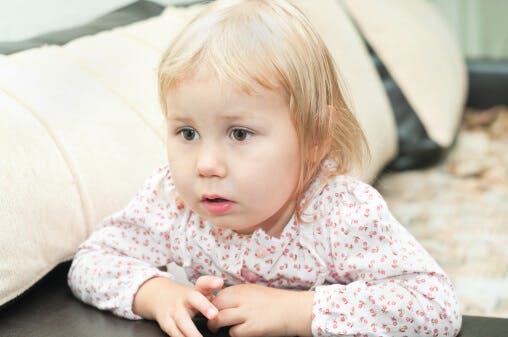Dehydration: A-to-Z Guide from Diagnosis to Treatment to Prevention

Introduction to dehydration:
When children have vomiting or diarrhea, their biggest risk is often from fluid loss. The same can be true when children have fevers or respiratory infections. Dehydration is dangerous. It is the single leading cause of childhood death around the world.
What is dehydration?
Our bodies are more than half water. For babies, the proportion is even higher. More than 75 percent of their body weight is made up of water.
Each day, water is lost in the urine, the stool, from our mucus membranes, and through the skin. Each day this water must be replaced by what we drink and eat. (Food also contains a lot of water.)
Each day electrolytes, such as sodium and potassium, along with water are lost in urine, sweat, and stool. They must be replaced by what we eat or drink.
If we don’t have enough body water, or if the concentration of electrolytes in that water gets out of balance, we are dehydrated. Our body systems begin to malfunction and shut down. Unless corrected, we can die.
How much fluid is lost each day? It varies from child to child, but on average, a healthy child who weighs 8 pounds might lose about 12 ounces of fluid over 24 hours. 13 pounds might lose about 20 ounces of fluid over 24 hours. 16 pounds might lose about 24 ounces of fluid over 24 hours. 20 pounds might lose about 30 ounces of fluid over 24 hours. 24 pounds might lose about 35 ounces of fluid over 24 hours.
32 pounds might lose about 40 ounces of fluid over 24 hours. 40 pounds might lose about 47 ounces of fluid over 24 hours. 60 pounds might lose about 55 ounces of fluid over 24 hours. 80 pounds might lose about 60 ounces of fluid over 24 hours.
Who gets dehydration?
Children with vomiting or diarrhea are most likely to become dehydrated. Both can increase the fluid losses and may decrease fluid intake.
Those with high fevers or rapid breathing are also at risk. Certain conditions, such as diabetes, can lead to dehydration.
Children become dehydrated much more rapidly than adults. Healthy babies lose (and hopefully replace) up to 20 percent of their body water each day. Healthy adults lose only about 5 percent of theirs.
Those who start out malnourished are at the highest risk from dehydration because they lack the reserves of a healthy child.
What are the symptoms?
Children with mild to moderate dehydration may have dry mouths, fewer tears when they cry, fewer wet diapers, darker urine, and a sunken soft spot. They will likely be less active than usual.
As dehydration worsens, children usually become more irritable and then lethargic. The pulse grows faster and weaker. The eyes will be very sunken and the lips and mucus membranes very dry. The skin may wrinkle. Urine decreases even further. The hands and feet may become cold or blue. Muscle cramps are common.
Severe dehydration is a medical emergency.
Is it contagious?
Dehydration is not contagious, although many diseases that cause it are contagious.
How long does it last?
Dehydration will last until fluid and electrolyte intake surpasses what is being lost, and fluid and electrolyte reserves have been restored.
How is dehydration diagnosed?
Dehydration is diagnosed first by the history and physical exam. Blood and urine tests, and body weight, can help pinpoint the degree of dehydration and any electrolyte imbalance.
How is dehydration treated?
With mild diarrhea and no signs of dehydration, the diet may not need to be changed. Continue to give plenty of the usual fluids (as long as they are not too high in sugar since that can worsen the diarrhea).
If the diarrhea is more severe or vomiting is also present, breast milk or an electrolyte solution may be needed until the vomiting subsides. Fluids offered should contain three essential ingredients: water, sugar, and salt. Plain water alone is not appropriate to treat dehydration. This could lead to serious electrolyte imbalances. Breastmilk contains all of three essential ingredients plus more. Electrolyte solutions like Pedialyte have all three in excellent proportions. Sometimes children who refuse to drink Pedialyte will readily eat Pedialyte freezer pops. Gatorade, Powerade, and other sugar sweetened electrolyte solutions can be given to older children who don’t like the taste of other options, though these drinks have more sugar than I would prefer.
When children cannot tolerate drinking fluids, IV electrolyte solutions are the next best alternative.
If your child’s vomiting lasts longer than 24 hours, if there are watery stools every hour or two, or if you suspect your child is becoming dehydrated, you will want to contact your health-care provider for specific instructions tailored to your child.
How can dehydration be prevented?
Dehydration is best prevented by minimizing the illnesses that lead to it. Once the illnesses are present, as they will be at some time in all children, keeping fluid intake above fluid losses prevents dehydration. In a vomiting child, this can be quite difficult unless the fluids are given frequently in very small amounts. Controlling fevers also helps to decrease fluid losses.
A baseline of good nutrition is also important for preventing dehydration.


